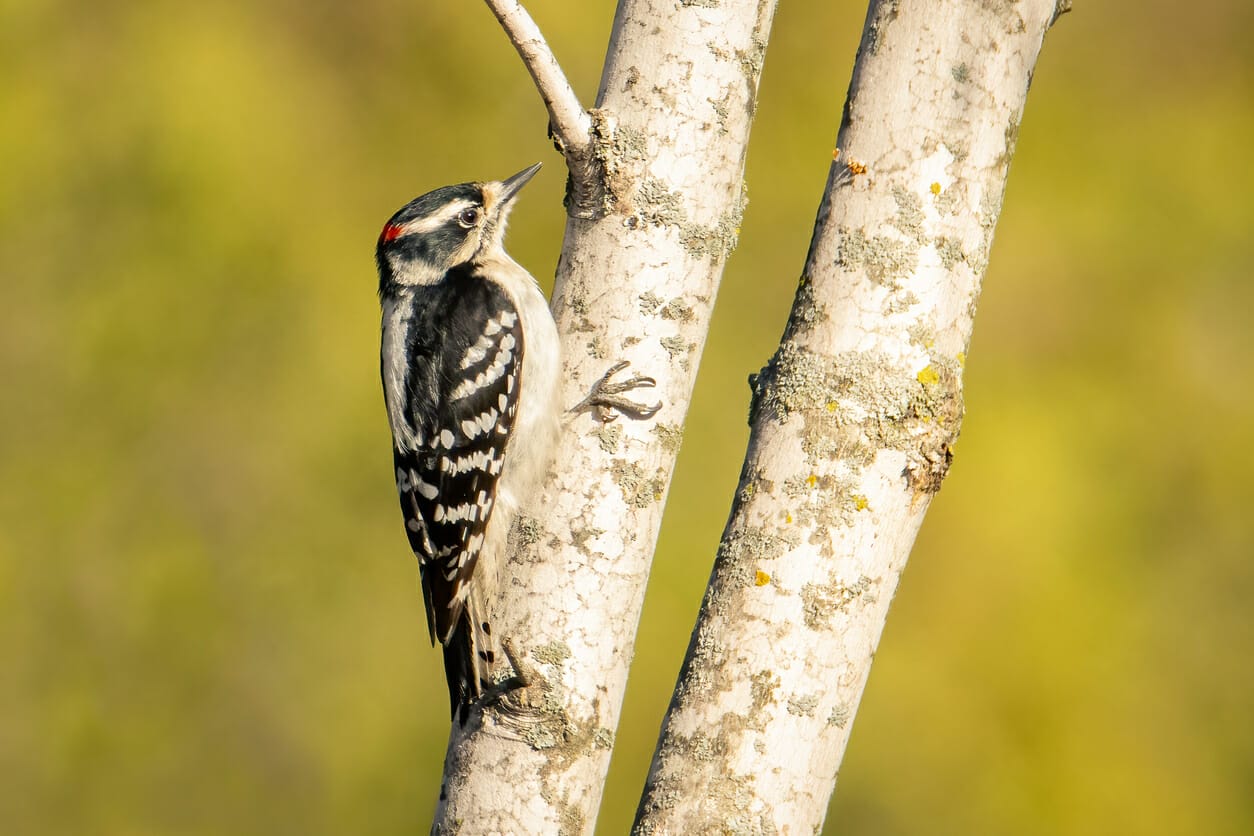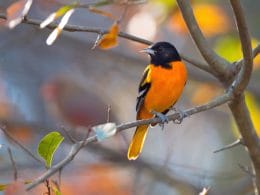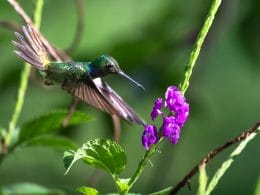New Jersey is full of amazing wildlife. Because of the rich and lush environment, over 1,000 different species of animals live there. Almost 500 of those species are birds, ranging from owls all the way to woodpeckers.
There are 11 different species of woodpeckers in New Jersey. If you’re looking for one, or all, of them, you’ve come to the right place.
So, let’s take a look at the different species and where you can find them in the Garden State.
1. Pileated Woodpecker
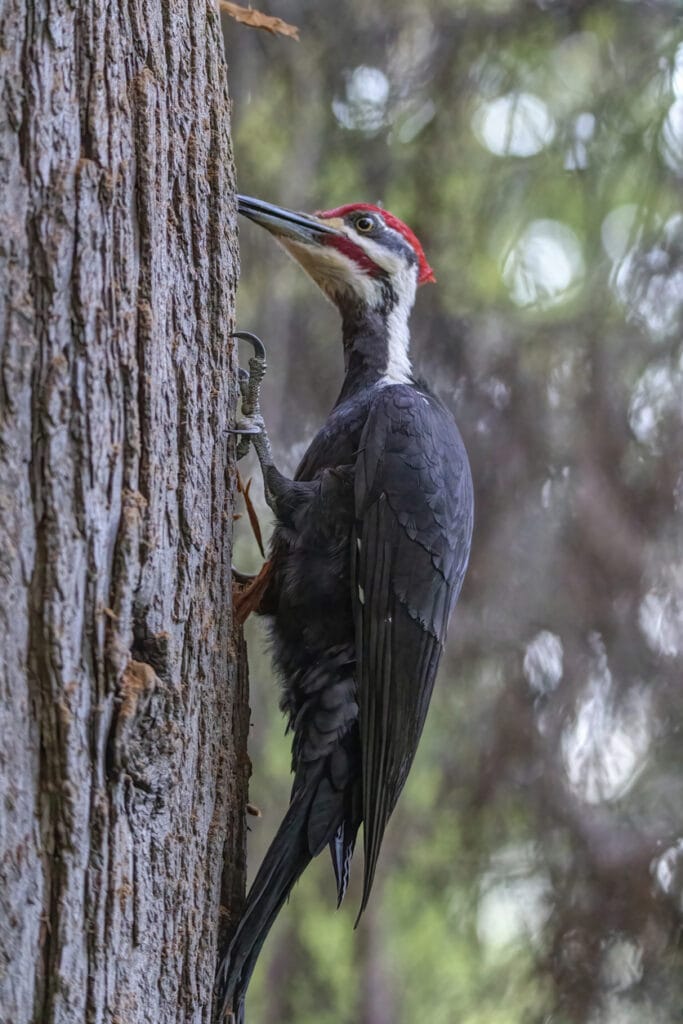
- Scientific name: Dryocopus pileatus
- Length: 15.8 to 19.3 inches
- Weight: 8.8 to 12.3 ounces
- Wingspan: 25 to 30 inches
- Average life span: 10 to 12 years
- Status: Least concern
Let’s start off our list with a bang. The Pileated Woodpecker is the largest in New Jersey. It’s also pretty common in the state all year.
Its large size makes the Pileated Woodpecker easy to find. It has a distinctive red tuft on its heads. That tuft starts at the top of the woodpecker’s bill and goes all the way down its head.
Author Note: This makes it simple to tell this bird apart from others while it’s flying. Other than its head, the rest of its body is solid black. The only exception is the two white stripes that start at the cheeks and go down the sides.
The Pileated Woodpecker likes to hang around dead trees for shelter because it’s the best location to find food. See, dead trees make excellent homes for carpenter ants, the pecker’s main food source.
2. Hairy Woodpecker

- Scientific name: Leuconotopicus villosus
- Length: 7.1 to 10.2 inches
- Weight: 1.4 to 3.4 ounces
- Wingspan: 13 to 16.1 inches
- Average life span: 12 to 15 years
- Status: Least concern
You can find the Hairy Woodpecker all year in New Jersey. However, you’re much more likely to see one in the winter. That’s when it’s on the move to a new environment.
A Hairy Woodpecker’s belly is fully white and its wings are black with white spots all over. This makes it kind of tricky to find since its color pattern acts as a sort of camouflage.
However, males of the species have a small patch of red feathers close to the back of their heads. This red patch isn’t obvious, but if you look closely enough, you can see it.
Another great way to find Hairy Woodpeckers is to listen out for their calls. They make a whinnying sound that comes out in rhythmic bursts.
These birds spend most of their time in woodlands. That’s where they find spiders and caterpillars for food. Yet, now and then, you can find them using bird feeders.
3. Downy Woodpecker

- Scientific name: Dryobates pubescens
- Length: 5.5 to 6.7 inches
- Weight: 0.7 to 1.0 ounces
- Wingspan: 9.8 to 11.8 inches
- Average life span: 1 to 2 years
- Status: Least concern
The Downy Woodpecker is the most common in New Jersey. It’s there all year round, hunting and nesting.
A Downy Woodpecker looks a lot like a Hairy Woodpecker. But, the Hairy Woodpecker is much larger. Another difference is the placement of the red patches on the males. A Downy Woodpecker male has a red patch at the tip of the back of his head.
Still, this might not be much help in identifying Downy Woodpeckers. These peckers are so small that you can’t see these red patches from a distance.
Even though they’re small, these birds are easy to come across because they like to use bird feeders.
When not at a bird feeder, a Downy Woodpecker spends a lot of its time in parks and orchards. There, they feed on insects and berries.
4. Red-bellied Woodpecker

- Scientific name: Melanerpes carolinus
- Length: 9.1 to 10.6 inches
- Weight: 2.0 to 3.2 ounces
- Wingspan: 14.9 to 18.1 inches
- Average life span: 10 to 12 years
- Status: Least concern
Red-bellied Woodpeckers are native to New Jersey and you can spot them any time of the year. They’re friendly and can sometimes even approach you.
These birds have a black-and-white barred pattern on their wings and white belly. These marks aren’t distinctive enough to identify them, though.
Top Tip: The males of this species have a patch of red feathers that makes them a notch easier to recognize. This patch is directly at the top of the woodpecker’s head, sitting in the center like a crown.
These birds like to eat insects, seeds, and fruits. That means that you can find them hanging around densely packed parks. Still, that’s not the only place you can find them.
Red-bellied Woodpeckers don’t shy away from humans. They actually like to use bird feeders, so it shouldn’t surprise you to see one hanging around in your backyard.
5. Red-headed Woodpecker
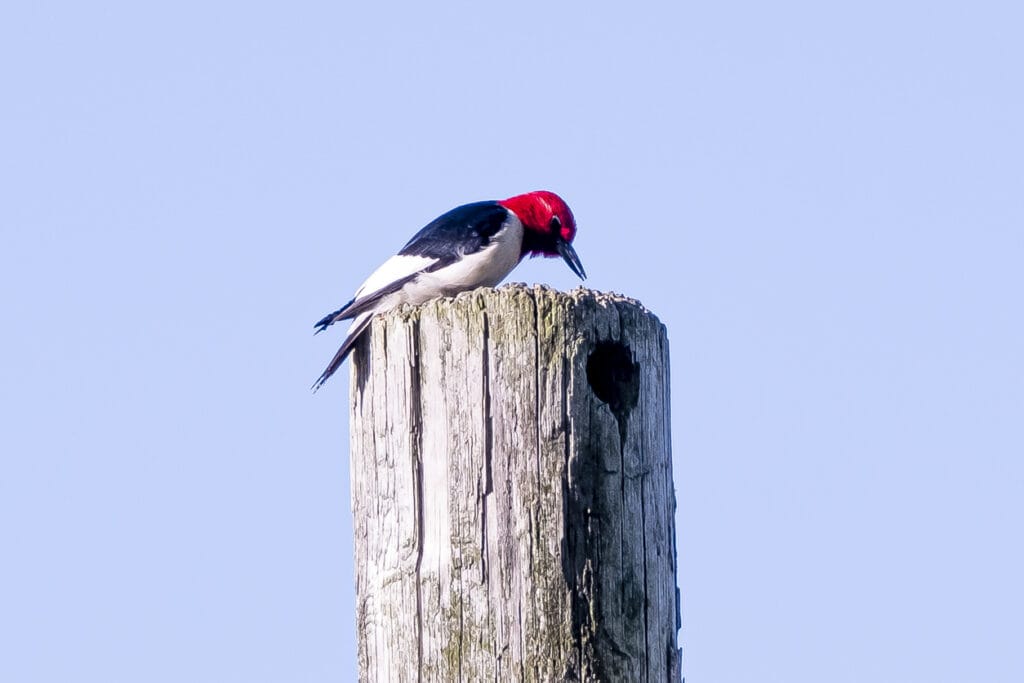
- Scientific name: Melanerpes erythrocephalus
- Length: 7.5 to 9.1 inches
- Weight: 2.0 to 3.4 ounces
- Wingspan: 14 to 17 inches
- Average life span: 9 to 12 years
- Status: Near threatened
Yet another common bird in New Jersey, the Red-headed Woodpecker is there all year. However, it’s much more frequently seen in the summer.
As the name suggests, the Red-Headed Woodpecker has a red head which is bright red overall. That makes this woodpecker one of the easiest to identify.
Even though this bird is native to New Jersey, you’re less likely to see it every passing year. Because of habitat destruction, the Red-headed pecker has seen a decline in numbers.
You can still find many Red-headed Woodpeckers around woodlots in New Jersey. You may sometimes even spot them in swamps and savannas.
These birds like to spend most of their time in the forest next to their food source. So, you can see them next to honeybee hives and ant colonies.
6. Yellow-bellied Sapsucker

- Scientific name: Sphyrapicus varius
- Length: 7.1 to 8.7 inches
- Weight: 1.5 to 1.9 ounces
- Wingspan: 13.4 to 15.8 inches
- Average life span: 5 to 8 years
- Status: Least concern
Yellow-bellied Sapsuckers are migratory birds, which means that they don’t spend too long in one area. However, they pass by New Jersey quite often because that’s where they do most of their breeding.
Yellow-bellied Sapsuckers have black wings with rows of white dots. They also have a red patch in the center of their heads. Males of this species have red bands on the front of their necks.
Top Tip: As you can tell from the name, this bird has a yellow belly. However, because of the wings, you can’t really see the belly unless it’s in flight. Therefore, what you’ll normally notice is a small band of yellow under the neck red band.
The main food source of a Sapsucker is sap. That’s why you can find these birds flying around maple and birch trees.
7. Northern Flicker

- Scientific name: Colaptes auratus
- Length: 11.0 to 12.2 inches
- Weight: 3.9 to 5.6 ounces
- Wingspan: 16.5 to 20.1 inches
- Average life span: 6 to 9 years
- Status: Least concern
Northern Flickers are also pretty common in New Jersey. Their name suggests that they like the winter, but they’re much more active during the summer.
These birds have white bodies and wings with a black-barred pattern all over. They also have a black band just under their necks. However, what makes these woodpeckers special is the band of color on their tails.
This band is usually either red or yellow, depending on where the bird is from.
Northern Flickers like to have plenty of room to move around. For this reason, you’ll find them flying in open forests and parks. They especially like the woods because it has plenty of insects, like ants and beetles.
8. American Three-toed Woodpecker

- Scientific name: Picoides dorsalis
- Length: 8.3 to 9.1 inches
- Weight: 1.6 to 2.4 ounces
- Wingspan: 14.6 to 15.3 inches
- Average life span: 3 to 6 years
- Status: Endangered
The American Three-toed Woodpecker has been on the list of endangered species for a while. However, its numbers have seen small spikes in recent years. This means that while you can see a Three-toed Woodpecker in New Jersey, it’s not likely.
American Three-toed Woodpeckers resemble Hairy Woodpeckers. They’re black with white spots all over their bodies. Yet, the major difference between the two birds is that male Three-toed peckers have a yellow patch instead of red.
When looking for these woodpeckers, focus your efforts on coniferous forests. They especially like burned areas that have lots of insects, like beetles.
You can also try to listen out for their call. They make a subtle chirping sound in the spring and summer.
9. Black-backed Woodpecker

- Scientific name: Picoides arcticus
- Length: 8.0 to 11.2 inches
- Weight: 2.1 to 3.1 ounces
- Wingspan: 15.8 to 16.5 inches
- Average life span: 6 to 8 years
- Status: Least concern
There have been a few sightings of Black-backed Woodpeckers in New Jersey over the years. Unfortunately, they’re rare and far between.
Black-backed Woodpeckers have inky black heads, back, and wings. The rest of the birds’ bodies are completely white. They also have a white ‘mustache.’ Some of these peckers even have a thin white line directly under the eyes.
Author Note: Male Black-backed Woodpeckers have yellow patches on their heads, which are usually located at the front.
Black-backed Woodpeckers enjoy flying around boreal and montane forests. They also take a special liking to recently burned areas where they will find charred trees and hollow them out to make nests.
Burned areas also attract plenty of insects. Many beetle species like to lay their larvae in dead trees. So, a good tree can provide the Black-backed Woodpecker with both food and shelter.
10. Williamson’s Sapsucker

- Scientific name: Sphyrapicus thyroideus
- Length: 8.3 to 9.8 inches
- Weight: 1.6 to 1.9 ounces
- Wingspan: 15.0 to 19.0 inches
- Average life span: 6 to 9 years
- Status: Least concern
Williamson’s Sapsucker sightings are rare because the bird’s population is small in New Jersey. In addition, it mainly likes to keep to itself.
People find it hard to distinguish between the Yellow-bellied Sapsucker and Williamson’s Sapsucker. They look almost identical and have a similar size. The only physical difference between them is the feathers on their backs.
Author Note: Williamson’s Sapsuckers have solid black backs, while the Yellow-bellied Sapsuckers have barred backs. This may seem like such a minor difference, but that’s just what you can see on the outside. These birds have different habits and behaviors.
For example, Williamson’s Sapsuckers prefer open conifers and woodlands. So, while Yellow-bellied peckers feed on birch, Williamson’s feed on pine and fir.
These birds also like to follow warmth. Therefore, you may want to start your search efforts in the warmer regions of the state.
11. Acorn Woodpecker
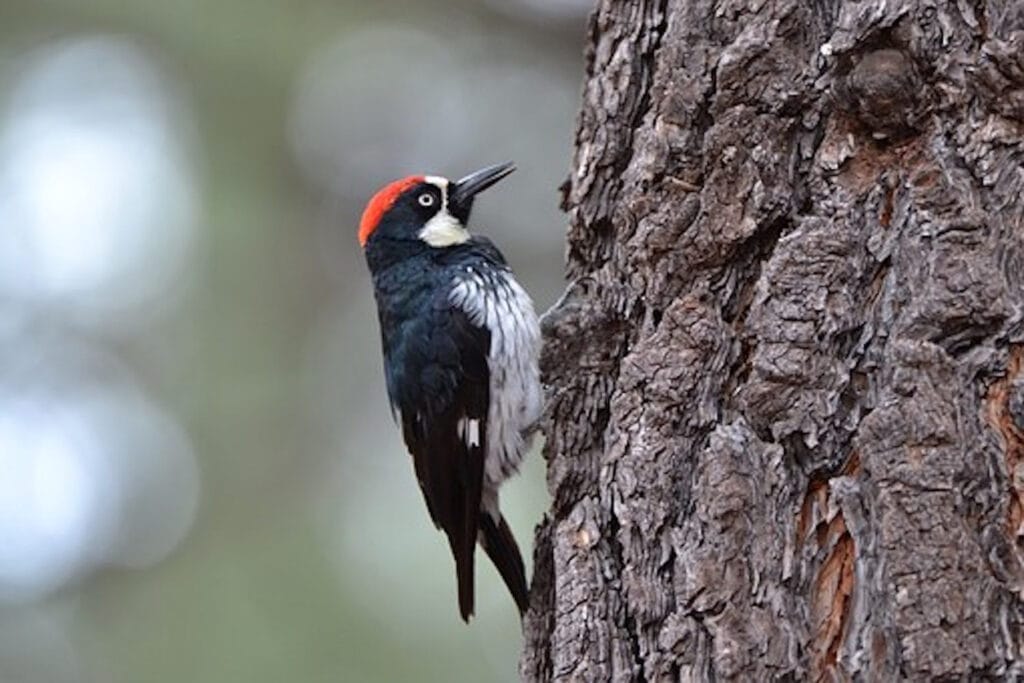
- Scientific name: Melanerpes formicivorus
- Length: 7.5 to 9.1 inches
- Weight: 2.3 to 3.2 ounces
- Wingspan: 13.8 to 16.9 inches
- Average life span: 9 to 16 years
- Status: Least concern
Acorn Woodpeckers aren’t native to New Jersey. However, there have been plenty of sightings of them in the state.
Acorn Woodpeckers are mostly black with a band of white around their bills. Sometimes they can also have a few spots of white on their bellies. The males of this species have a red patch on their heads, which the females lack.
These peckers like to live in groups and hoard acorns; that’s where their name comes from. They can gather hundreds of acorns and hide them in holes all around their nests.
If you’re looking for them, you may want to start at an oak tree. Still, you should know that acorns aren’t their only food source. Acorn Woodpeckers also like to hunt insects on the wing.
Wrapping Up
Finding woodpeckers in New Jersey shouldn’t be too hard as there are 11 species of these quirky fellows you can see year-round.
Depending on the time of year, you may be likely to see a specific woodpecker more often than the others. Still, if you know where to look, you might just be able to find all the species on the list.
FAQ
To find out where recent sightings of woodpecker have been, try eBird. You can search for the latest sightings or particular species or what has been seen in a certain area.
The Downy Woodpecker is the most common in the state. You stand a good chance of seeing the Pileated Woodpecker as well.
Audubon only list High Point State Park and Stokes State Forest as a good place to see the Yellow-bellied Sapsucker.




